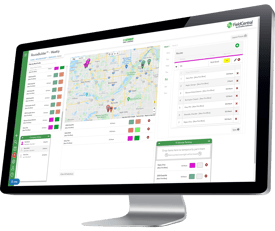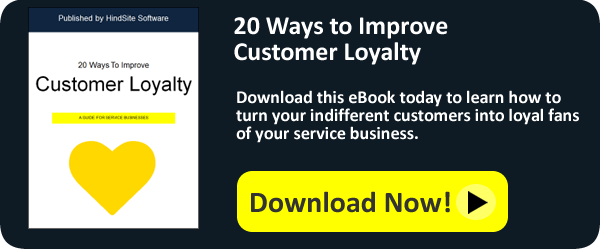
By Taylor Tuomie
“The chat feature has become the leading contact source, as 42% of full-service customers indicate using a live online chat feature vs. email (23%) or other social media forum (16%). Additionally, online satisfaction is highest among customers who use the chat feature”
-from 2013 U.S. Wireless Customer Care Full-Service Performance Study
You’ve likely seen chat windows on websites before. They’re typically found on insurance websites or other sites where customer service is needed more often than not when visitors are landing on a website. They can be a huge time saver as a website visitor (assuming the person on the other end is helpful!) and it can also save the business using the live chat time.
Maybe you’ve considered trying chat windows out before for your field service website or maybe you haven’t even considered it as an option at all. Here are 4 reasons why you should be utilizing a live chat window for your business.
Live Chat is Convenient
Having a live chat window on your website is extremely convenient for both customers and the businesses using them. Here is how it is more convenient for both parties.
For customers
It is a whole lot easier than emailing the company and waiting for a response. Customers and prospects might not feel their question warrants a phone call, a chat window is perfect for those in between situations. Not everyone is willing to pick up the phone to ask a question. And, as your millennial customer base grows, they will start to expect an option like this. They want a way to communicate instantly and in a way that they are comfortable.
For businesses
A live chat window is more convenient to field questions than having to answer phones or sifting through emails. It is easier for businesses to have someone dedicated to answering these live chat questions as they come in. They can also multi task and help out more than one customer at a time.
It increases sales
A live chat window can act as another form of lead generation. If someone lands on your website looking for a service that you sell, you’re able to proactively field any questions that come up. Just check out this stat from the American Marketing Association:
Live chat helps increase conversions by at least 20 percent and the typical ROI from paid live chat software for sales teams is about 300%.
They also state the customers who use live chat are 3 times more likely to make a purchase than those who don’t.
Can reduce costs
Chat windows free up time for your office staff, which can save you money in the long run. Your staff is able to field more customer support questions at one time and they are getting to help more customers and prospects because of the quick turn around on responses. Also, chat software is often paired with business phone plans, so they can be relatively inexpensive.
Gives you a conversation history
Another nice benefit of having a chat window to field questions is that all your conversations are saved. You can learn quite a bit about what customers and prospects are asking for. If you keep receiving questions about pricing or services you offer, it might be a good indicator that you need to create more clarity on your website. Also, if any customer support issues do arise, you’re able to see how effectively your employees respond to issues.
Want more tips on providing customer service that earns your business even more happy customers? Download our free eBook, 20 Ways to Improve Customer Loyalty!








